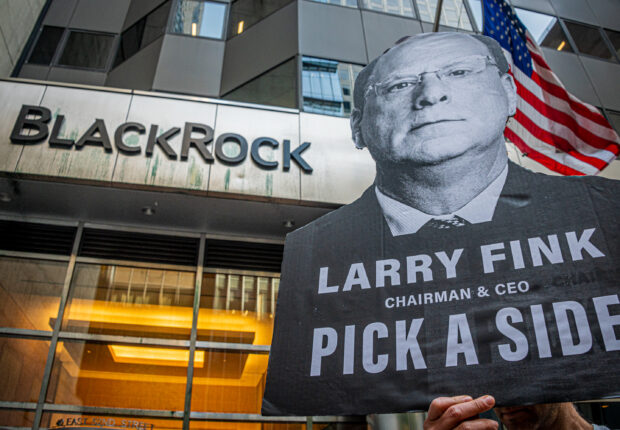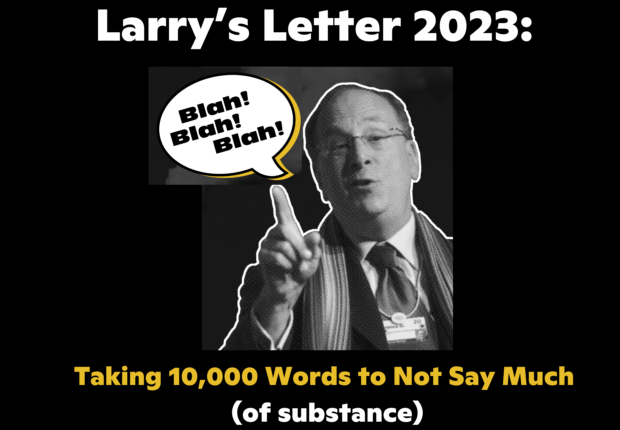The Race to Zero campaign, a U.N.-backed initiative, released updated, strengthened criteria last week. BlackRock, as a signatory of the Net Zero Asset Managers initiative (NZAM), is a member of Race to Zero and therefore is directly affected by the updated criteria.
Larry Fink has said time and again — for example in his last two letters to CEOs — that the energy transition is already underway and the only question remaining is “will you lead or be led?” The updated Race to Zero criteria is the roadmap for that leadership and BlackRock can and should step up to lead.

Happily, the Race to Zero campaign even divides the criteria into two types: the “starting line” (the minimum criteria that every signatory must meet) and the “leadership practices” (the roadmap for entities to take a leadership role to accelerate the transition to a decarbonized economy).
When it comes to the “starting line”, most significantly, the strengthened criteria explicitly require members to “phase down and out all unabated fossil fuels … investors must restrict the development, financing and facilitation of new fossil fuel assets, which includes no new coal projects.”
BlackRock has significant work to do to come up to this raised bar. Last year the asset manager had $34 billion in companies with coal expansion projects and $109 billion in coal companies overall. Just weeks after Larry Fink’s public appearance at the global climate conference COP26, BlackRock also touted a new $15.5 billion gas pipeline project as a “bridge” fuel and climate win — a claim that has been thoroughly disproven.
The IPCC and IEA both make it clear that existing fossil fuel projects have used up the planet’s carbon budget in a 1.5°C scenario. A new study from May 2022 shows that 40% of developed reserves would actually have to stay in the ground if we are to have a 50-50 chance of limiting global warming to 1.5 degrees. There is only one conclusion to draw from these findings: further investing in coal, oil, and gas expansion will lead to runaway climate change and result in billions in stranded assets. To protect both its clients and a livable future, BlackRock must draw red lines on fossil fuel expansion.

Another update from Race to Zero is the stipulation that members “cover all scopes of emissions” (meaning no omission of scope 3) “in interim as well as long-term commitments. For financial institutions this is inclusive of all financed/portfolio emissions.”
Here is another area where BlackRock must come up to the new starting line. Just this past week, the asset manager submitted a letter to the SEC arguing for loopholes for companies to avoid reporting scope 3 emissions. Firstly, BlackRock needs this information to evaluate its own financed emissions. Secondly, as BlackRock itself has pointed out in the past, it’s crucial information to evaluate a company’s climate exposure that the firm needs to best execute its duty to its clients as a fiduciary.
Race to Zero also introduced a new category into its “starting line” criteria: “Persuade”. This new section requires members to “align their lobbying and advocacy activities with net zero by proactively supporting climate policies at the subnational and national level consistent with the Race to Zero criteria.”
Again, BlackRock must answer the call to action. This past shareholder season, the asset manager declined to support several resolutions asking banks and insurers to align their business with a 1.5 degree-pathway, decrying them as “micromanaging.”
The updated Race to Zero “leadership practices” includes: protecting biodiversity, halting deforestation, encouraging entities to go beyond their own decarbonization pathways, and empowering relevant stakeholders to accelerate their own mitigation efforts.
BlackRock has zeroed in on promoting and protecting biodiversity in a recent ad campaign and investment strategy memo, but its investments do not tell the same story. Protecting biodiversity, as the Race to Zero leadership practice criteria make explicit, goes hand-in-glove with halting deforestation. According to Forests and Finance, BlackRock has approximately $2.3 billion currently invested in deforestation-risk companies.
Race to Zero has thrown down the gauntlet and BlackRock should not only rise to meet that bar, it should exceed it. The asset manager is no stranger to leadership. Larry Fink’s 2020 letter proclaiming the reality that climate risk is investment risk was a watershed moment for Wall Street. The firm should solidify its place in the vanguard of the financial climate movement for mega asset managers.
Race to Zero has given existing members like BlackRock one year from its June 15, 2022 publication to align with the updated minimum criteria. The level of ambition set out by the clarified criteria shows which direction the industry is heading. 356 days to go, BlackRock. Will you lead, or be led? Or be left behind?

